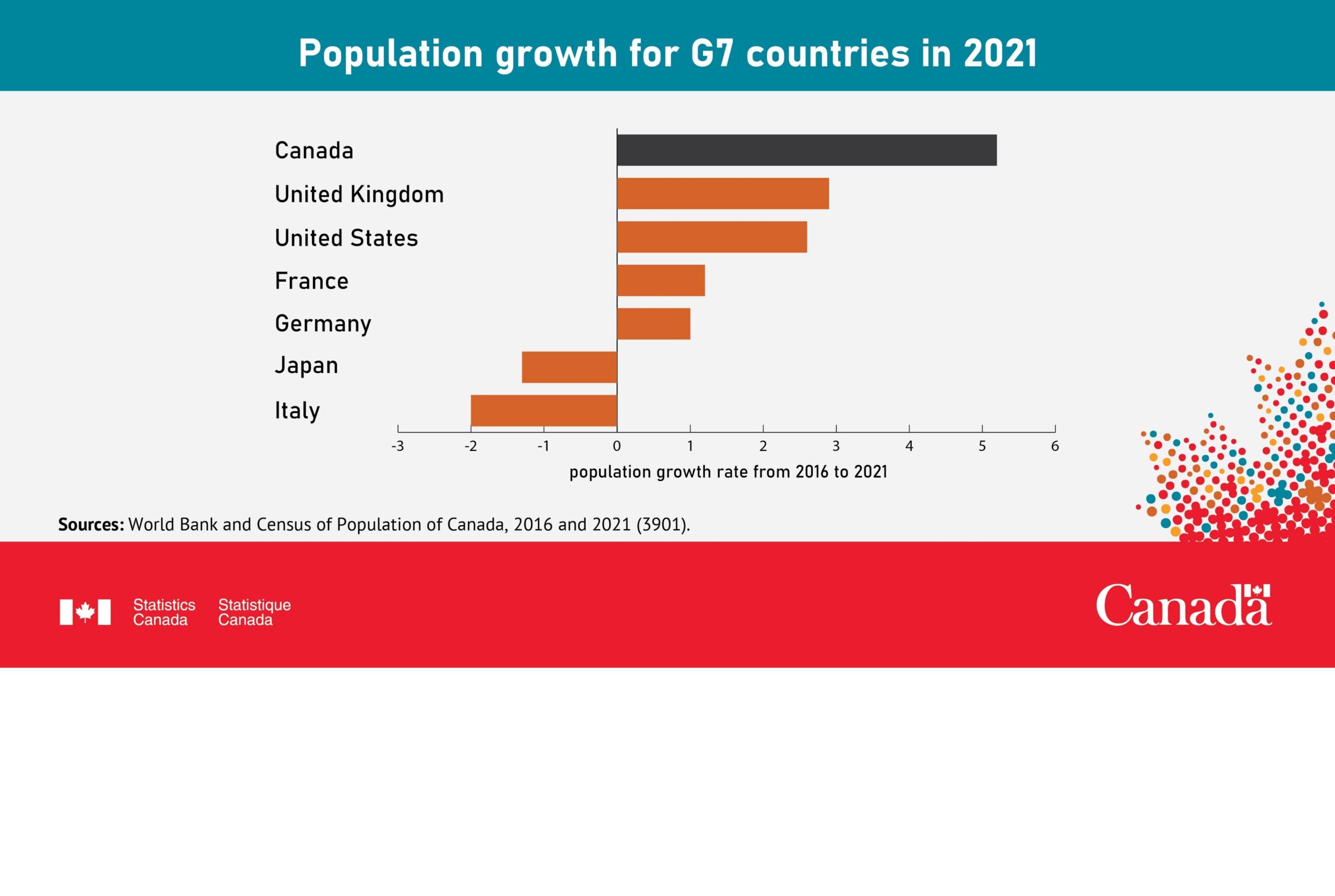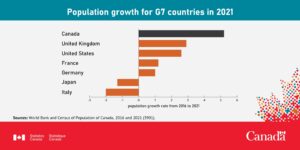2016-2021 Census: Canada grows at the fastest pace in the G7
TORONTO – Despite the pandemic, Canada remains the fastest growing country in the G7, thanks in large part to immigration. From 2016 to 2021, canada’s population grew at almost twice the rate of France, Germany, Japan, the United Kingdom, and Italy. This is what emerges from the data of the 2021 census published today.
The numbers of this latest survey indicate that in the spring of last year the Canadian population amounted to 36,991,981, with nearly 27.3 million Canadians living in one of Canada’s 41 major urban centers. Compared to five years ago, about 1.8 million more people live in Canada.
While the country’s population growth ranks first in the G7, it ranks seventh in the G20, behind Saudi Arabia, Australia, South Africa, Turkey, Indonesia and Mexico, and is on par with India.
For the first time since the ’40s the Maritimes – Prince Edward Island, Nova Scotia and New Brunswick – are the provinces that have grown at a faster rate than those of the Prairies – Alberta, Saskatchewan and Manitoba – with much of this growth attributed to immigration from abroad and migration within the country.
Proceeding at the fastest pace nationwide – with a growth rate of 12.1% – were the inhabitants of the Yukon followed by those of Prince Edward Island who recorded a population increase to a percentage of 8%. The only province to witness a decline in its people was that of Newfoundland and Labrador where the drop stood at 1.8%.
The demographic survey shows an overall increase worthy of note but it is immigration, not the birth rate, the engine of the increase from 2016 to 2021 of the inhabitants of the country to the north and the United States. And immigration has also been the main reason for a slowdown starting from 2020, when border restrictions have been imposed to limit the spread of Covid-19.
The number of Canadians living in rural areas in 2021 was 6,601,982, an increase of 0.4% compared to 2016, but that growth rate was far lower than that of Canadian urban centers, which grew at a rate of 6.3%.
The number of urban areas with a population of more than 100,000 in 2021 was 41, compared to only 35 at the time of the last census: of the six new large urban centers, none were located in Ontario, Canada’s most populous province. Three were in British Columbia, including Kamloops, Chilliwack and Nanaimo. The others were Fredericton, Drummondville in Qubec and Red Deer in Alberta.
Toronto remains Canada’s most populous city with 6,202,225 residents, with Montreal in second place with 4,291,732, followed by Vancouver with 2,642,825 people.
From 2016 to 2021, Toronto and Montreal grew at the same rate of 4.6%. Although the growth of Canada’s two largest cities was lower than the national average of 5.2%, they welcomed a record number of permanent or temporary immigrants compared to previous years.
The other three Canadian cities with a population of over one million in 2021 are: Ottawa–Gatineau with 1,488,307, Calgary, which now has a population of 1,481,806, and Edmonton, where 1,418,118 people live.




